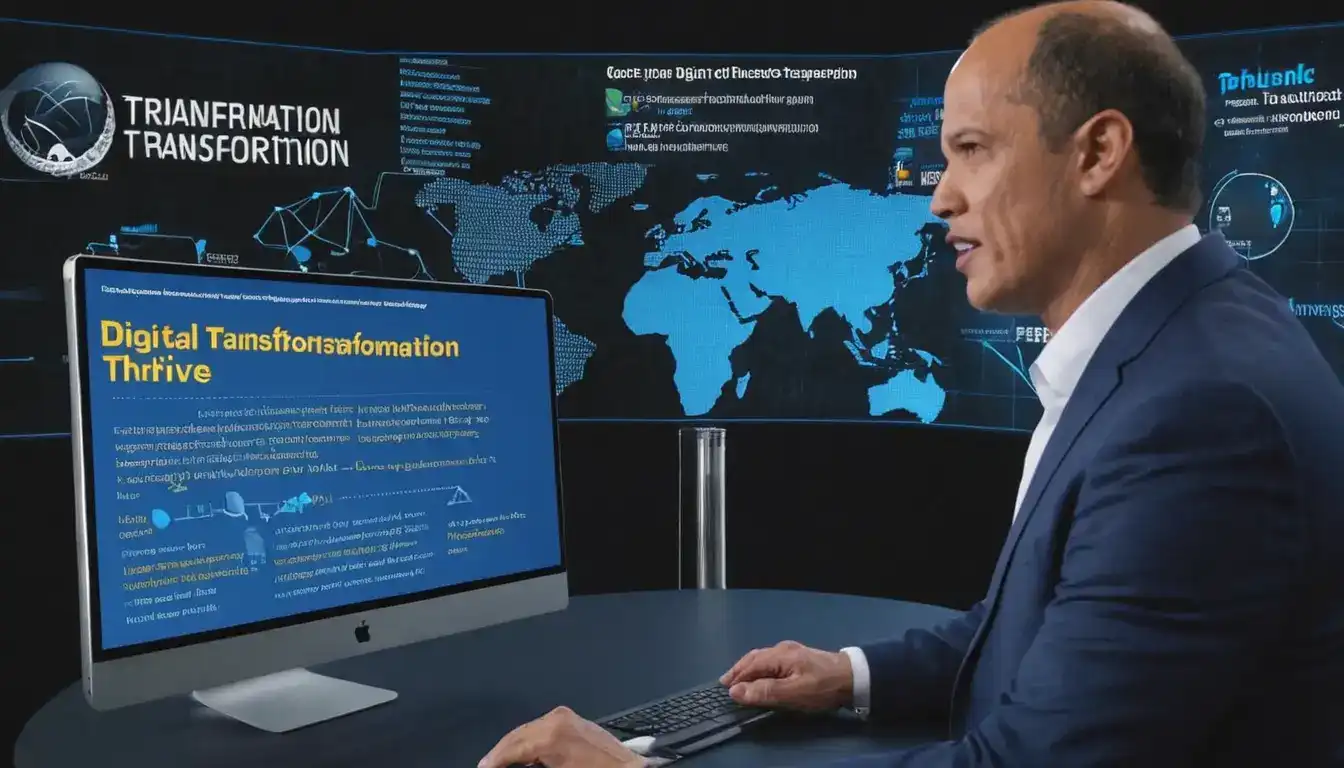Central Banks at the Crossroads: Navigating a Changing Economic Landscape
Emily Willis

Photo: Central Banks at the Crossroads: Navigating a Changing Economic Landscape
Central banks play a critical role in steering the economic ship. They're tasked with maintaining price stability, promoting full employment, and fostering a healthy financial system. However, the current economic landscape presents a unique challenge for these institutions. Rising inflation, geopolitical tensions, and lingering effects of the pandemic have created a complex scenario, forcing central banks to navigate a delicate balancing act.
This article delves into the challenges facing central banks, explores the tools at their disposal, and examines potential strategies they can employ to navigate these economic crossroads.
The Evolving Economic Landscape: A Perfect Storm?
Several factors contribute to the current economic uncertainty:
- Inflationary Pressures: Global supply chain disruptions, rising energy costs, and increased demand for goods and services have pushed inflation to multi-decade highs in many countries. This erodes purchasing power and can lead to economic instability.
- Geopolitical Tensions: The ongoing war in Ukraine, trade disputes, and global political instability create uncertainty and disrupt economic activity.
- Pandemic's Lingering Effects: While the worst of the COVID-19 pandemic may be over, its impact on supply chains, labor markets, and consumer behavior continues to reverberate.
- Shifting Policy Landscape: Years of low-interest rates and quantitative easing (QE) – injecting money into the economy – may have unintended consequences and need to be adjusted.
These interconnected challenges demand a nuanced approach from central banks.
The Central Banker's Toolkit: Instruments to Guide the Economy
Central banks have a set of tools to influence the economy:
- Monetary Policy: This refers to setting interest rates, which can impact borrowing and lending behavior. Lowering rates makes borrowing cheaper, stimulating investment and spending, but can also fuel inflation. Raising rates discourages borrowing, cools the economy, and helps curb inflation.
- Open Market Operations: Central banks can buy and sell government bonds to influence the money supply and interest rates. Buying bonds injects money into the system, lowering interest rates, while selling bonds removes money, pushing interest rates up.
- Reserve Requirements: These are the minimum reserves that banks must hold on deposits. Raising reserve requirements reduces the amount of money banks can lend, potentially slowing economic growth and inflation.
Choosing the right combination of these tools is crucial for navigating the current economic climate.
Steering Through Uncertainty: Strategies for Central Banks
Central banks face a delicate balancing act:
- Taming Inflation: Inflation is the primary concern for many central banks. Raising interest rates can help cool the economy and curb inflation, but it risks slowing growth and potentially leading to unemployment.
- Supporting Growth: While taming inflation is essential, central banks must also ensure the economy doesn't stall. Balancing the need to raise rates with supporting economic activity is a key challenge.
- Maintaining Financial Stability: Loose monetary policies in recent years may have inflated asset prices, creating financial vulnerabilities. Central banks need to be mindful of these risks as they adjust their policies.
Open communication and transparency from central banks with the public and financial markets are critical for building trust and managing expectations during uncertain times.
Building Resilience: Preparing for the Unforeseen
The global economic landscape is constantly evolving. Central banks can enhance their ability to navigate future challenges by:
- Developing Robust Economic Models: Accurate forecasting models help central banks anticipate economic trends and adjust policies accordingly.
- Building Policy Flexibility: Having a wider range of policy options allows central banks to respond effectively to diverse economic situations.
- Enhancing Communication Channels: Clear communication with the public and financial markets helps manage expectations and build trust in central bank policies.
- International Cooperation: Global economic challenges require international solutions. Collaboration between central banks can lead to more effective and coordinated responses.
Conclusion: A Balancing Act for a More Stable Future
Central banks play a crucial role in navigating a turbulent economic landscape. The current environment presents them with unique challenges, demanding careful consideration of policy options and potential consequences. By utilizing their toolkit strategically, prioritizing communication, and enhancing resilience, central banks can contribute to a more stable and prosperous future for the global economy.
Remember, the success of central bank policies hinges on their ability to adapt to changing circumstances and strike a balance between controlling inflation, promoting growth, and maintaining a stable financial system. As the economic landscape continues to evolve, central banks will need to remain vigilant and proactive in charting a course towards a more resilient and sustainable future for all.
Latest ✨
View AllUnlock your next great business idea! Learn a structured process to discover, evaluate, and refine entrepreneurial opportunities for real-world success.
Emily Willis
Unlock your financial superpower! Learn why financial literacy is crucial for a secure future & how to easily master money management for true independence.
Emily Willis
Craft a winning pitch deck! Learn to transform your vision into a compelling presentation that captivates investors & unlocks opportunities.
Emily Willis
Discover the blended teacher: how educators are transforming learning by combining traditional & online methods for personalized, engaging education.
Emily Willis
Business
View All
August 4, 2024
Digital Transformation: Businesses Leverage Technology to Thrive in the Digital AgeThe business world is evolving rapidly, with consumers expecting seamless digital experiences. Digital transformation involves integrating technology, focusing on customers, making data-driven decisions, and fostering innovation.
Emily Willis

August 5, 2024
Tips for Maintaining a Balance Between Work and Personal LifeAchieving a healthy work-life balance is essential for overall well-being, productivity, and happiness. Setting clear boundaries, prioritizing self-care, managing time effectively, nurturing relationships, and learning to unplug are key strategies to maintain this balance. It is important to communicate your needs effectively, seek support, and delegate tasks when necessary.
Emily Willis

June 9, 2025
Business Resilience in Uncertain TimesUnlock business resilience! Prepare for, adapt to, and overcome challenges. Transform uncertainty into opportunity and build a stronger, future-proof business.
Emily Willis
Economy
View AllUnlock global growth potential! Discover dynamic emerging markets, their rapid economic expansion, vast opportunities, and how to navigate complexities.
Read MoreGlobalization has reshaped the economic landscape, connecting countries and markets like never before. For emerging economies, this presents both challenges and opportunities. Challenges include economic vulnerability, income inequality, job displacement, and environmental impact.
Read MoreCentral banks are facing unique challenges in the current economic landscape, including rising inflation, geopolitical tensions, and lingering effects of the pandemic. They have a set of tools at their disposal, such as monetary policy, open market operations, and reserve requirements, to influence the economy.
Read MoreEntertainment
View All
August 4, 2024
The Evolution of Digital Distribution in the Music Industry: Challenges and OpportunitiesThe music industry has been transformed by digital distribution, which allows quick access to a vast catalog of music through streaming services and online stores.
Emily Willis

August 5, 2024
Classic Films: Timeless Masterpieces in the Age of StreamingClassic films may seem outdated in today's world of instant gratification and endless streaming options, but they offer enduring stories, masterful storytelling, historical insights, technical innovation, and artistic value that surpass modern offerings. While classic films face challenges such as accessibility and pacing, there are ways to overcome these obstacles, such as using streaming services, visiting local libraries, attending film festivals, and utilizing online resources.
Emily Willis

August 4, 2024
The Latest Music Trends, Artists Influencing Pop Culture, and How Digital Platforms Facilitate the Distribution of Music GloballyThe music industry is constantly changing due to consumer preferences, technology, and the influence of artists. Digital platforms have revolutionized music creation, distribution, and consumption, leading to genre fusion, the rise of independent artists, and collaborative projects. Influential artists like Billie Eilish, BTS, and Taylor Swift have shaped pop culture globally. Streaming services, social media, and direct-to-fan engagement have transformed music distribution. Digital platforms also promote cultural diversity and inclusivity, expand markets and revenue, and drive technological advancements. The industry is also focusing on sustainability and ethical practices. To succeed in the future, stakeholders must embrace digital transformation and champion inclusivity.
Emily Willis
Health
View AllRegular physical activity is crucial for maintaining long-term health and well-being. It has numerous benefits, including improving cardiovascular health, aiding in weight management, enhancing mental health, strengthening bones, boosting immune function, and promoting longevity.
Emily Willis
Quality sleep is essential for overall health and well-being, impacting physical, cognitive and emotional functioning. Lack of quality sleep can lead to a variety of health issues, including weakened immune function, heart problems, weight gain and cognitive impairment.
Emily Willis
Preventive healthcare focuses on strategies to prevent disease and maintain well-being, rather than just treating illnesses after they arise. It helps identify risk factors early on, allowing for interventions that can prevent or delay the onset of chronic diseases.
Emily Willis
Trending 🔥
View All
1
2
3
4
5
7
8
9
10
Lifestyle


Sports
View AllAugust 5, 2024
Sports for Social Good: Promoting Diversity, Inclusion, and Community Engagement
Read MoreAugust 5, 2024
The Future of Sports: Anticipating Trends, Embracing Innovation, Shaping a New Era
Read MoreTechnology
View All
August 4, 2024
The Future of Artificial Intelligence: Opportunities and Challenges
opportunities and challenges presented by Artificial Intelligence (AI) in various sectors such as efficiency, customer experiences, healthcare, education, and economic growth. It highlights the need to address ethical considerations, job displacement, privacy issues, security risks, and regulatory challenges associated with AI.

August 5, 2024
Benefits of Using Cloud Computing for Your Business
Cloud computing has revolutionized business operations by offering cost savings, scalability, improved collaboration, enhanced security, and robust disaster recovery. It allows businesses to access services over the internet, reducing the need for physical infrastructure and providing flexibility.

August 5, 2024
AI Trend Predictions for 2024 and beyond
AI is no longer a futuristic concept, it is shaping our world at an unprecedented pace. In 2024 and beyond, AI trends are likely to dominate in various industries. Generative AI is expected to revolutionize content creation, design, and product development. In healthcare, AI will lead to personalized medicine, drug discovery acceleration, improved diagnostics, and remote patient monitoring.

August 5, 2024
The Impact of AI on the Future of Work and Education
AI is rapidly advancing and reshaping industries, economies, and societies, especially in the areas of employment and education. In the workplace, AI is changing roles through automation and creating new job opportunities. The future of work will most likely involve collaboration between humans and AI, requiring workers to develop new skills and engage in lifelong learning.


















